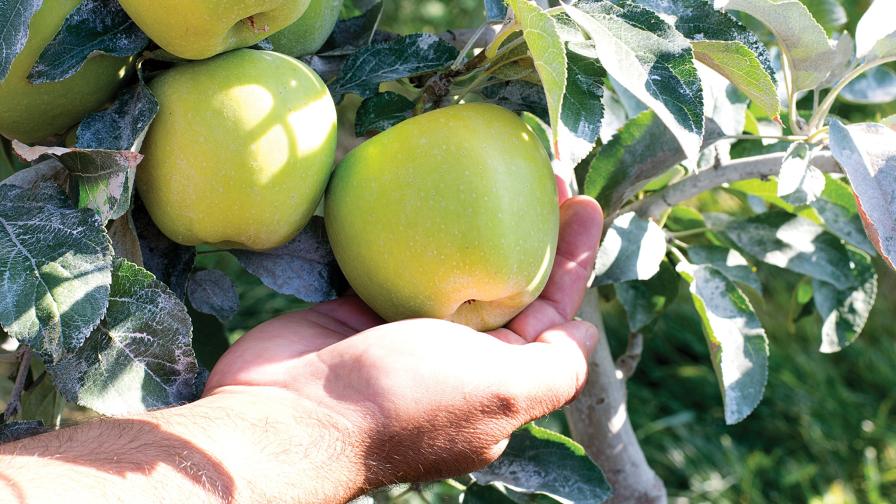California Walnut Growers Partner On Codling Moth Control
Every man for himself has turned into all for one and one for all in the case of California walnut growers and their battle against codling moth (CM). Growers using pheromone mating disruption (PMD) to control the pest are looking out for one another through the Good Neighbor program, developed by researchers at the University of California (UC). With the use of PMD becoming more widespread to control CM in walnuts, there is more need to collaborate with neighboring growers to ensure their efforts are not canceling each other out.
A Neighborly Approach
Growers using the CheckMate Puffer CM-O, manufactured by Suterra, are finding the PMD method to be useful in controlling codling moth; however, the use of the puffers comes with the responsibility to neighboring growers who are also trapping and monitoring CM, because the pheromone used in PMD is the same pheromone used in the common 1X lure placed in conventional CM monitoring traps. PMD growers must:
• Notify their neighbors in a timely manner of their intentions to use puffers before the season starts, recognizing that each orchard location will have a different prevailing wind.
• Educate neighbors on the influence the pheromone may have on their trapping and monitoring of CM in their own orchards.
• Both orchards should monitor CM populations using CM-DA Combo traps hung high in the top one-third of the canopy, according to recommendations from UC researchers.
Using Puffers And Traps
PMD floods the orchard with female moth pheromone so the male cannot easily find females to mate, according to a collaboration of UC researchers, who published an article in the May 2009 issue of “Fruit & Nut Notes,� a University of California Cooperative Extension Service publication. With careful monitoring and supplemental codling moth insecticide sprays, UC demonstrations have shown that aerosol CheckMate Puffer CM-O can provide good control in walnuts at rates as low as one unit per two acres in the orchard middles and more puffers along the edges. At this rate, along with the lower cost of labor and reduction in pesticide use over time, puffers are an affordable option for walnut growers.
The puffers are programmed to release pheromone at 15-minute intervals, starting in the early evening and stopping in early morning. Thus, during the night, air movement carries the pheromone throughout the puffer orchard and possibly into adjacent orchards. If the PMD pheromone enters an orchard that is trapping and monitoring CM, it can severely impair the usefulness of 1X lures in these adjacent orchards. Even worse, the pheromone concentrations capable of causing trap “shut down� in nearby orchards are not high enough to provide control.
The solution, according to UC researchers, is for adjacent orchards to monitor using the same lure now recommended for monitoring codling moth in PMD orchards, as the 1X lures are deemed useless there. The CM-DA Combo lure from Trece Inc. attracts both male and female moths using a combination of colemone, a male attractant, and a kairomone (pear essence), which attracts both males and females. CM-DA baited traps should be hung at the upper third height in the canopy to be most effective, say UC researchers.
Trap Efficacy
A 2008 orchard study in Yolo County, CA, looked at two neighboring orchards — one using puffers and the other using conventional insecticide control for CM. To estimate the puffers pheromone influence, 1X traps were hung at progressively farther distances from the puffer orchard. Researchers found that puffers reduced the CM catches in 1X traps as far as 1,000 feet away. In other studies, in the direction of the prevailing wind, the distance of influence has been up to 2,000 feet.
Proper monitoring using combo traps hung high in both the puffer and the neighboring orchard resulted in successful control of the codling moth populations. The puffer orchard treated one variety (Vina) with one insecticidal spray and the neighboring orchard used three applications of insecticides to control CM. Both orchards had less than 0.2% codling moth and 0% navel worm damage.










